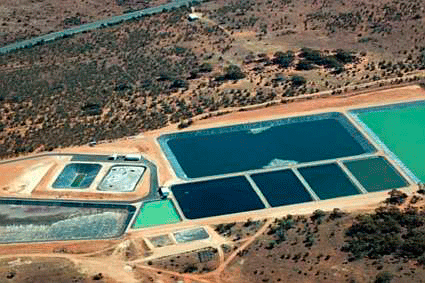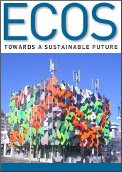
|
Published: 8 August 2011
Stirred ponds may boost treated water supply for rural communities
Research by Flinders University’s School of the Environment in South Australia has shown that a shallow, high-rate pond system to treat wastewater will slash water loss to evaporation, as well as boost the rates of removal of bacterial and viral pathogens.

|
|
Wastewater ponds near Barmera, South Australia. Credit: Margaret Stoekel/CSIRO
|
PhD researcher Mr Neil Buchanan says that evaporation from treatment ponds currently wipes out a large proportion – up to 90 per cent – of reclaimed water in South Australia’s small rural communities, where there is strong unmet demand for clean and relatively cheap water.
The research project compared a high-rate algal pond at Kingston-on-Murray with a conventional treatment pond system at Lyndoch near Adelaide.
High-rate algal ponds are designed and operated to maximise production of algae per unit area. They usually consist of a shallow raceway, or meandering channel pond where mixing is provided to keep the algae in suspension and maximise photosynthesis through continued exposure to the sun.
Mr Buchanan says the depth and relatively static nature of conventional waste stabilisation ponds means the combined decontaminating effect of sunlight and algal activity is limited to an upper layer of about 8–20 centimetres.
The high-rate algal pond, by contrast, uses a slowly revolving paddle wheel to aerate and move the water through a shallow, winding course. Moving the water exposes viral and bacterial pathogens to the direct decontaminating effect of ultraviolet light from the sun, while also inducing stronger algal growth.
‘The chemical effect of the algae is to increase levels of alkalinity in the water, which acts as a strong disinfectant,’ Mr Buchanan says.
The result, compared to a conventional pond system, is reduced evaporation and a higher rate of pathogen removal.
‘The high-rate pond has a surface area of about one-fifth of the pond system, and our work to date suggests that in a fifth of the area we are getting the equivalent of double the rate of the removal of pathogens,’ adds Mr Buchanan.
‘So overall, you could say that we could reduce the surface area and the evaporative losses by a factor of ten.’



